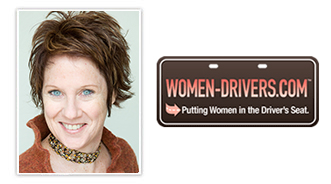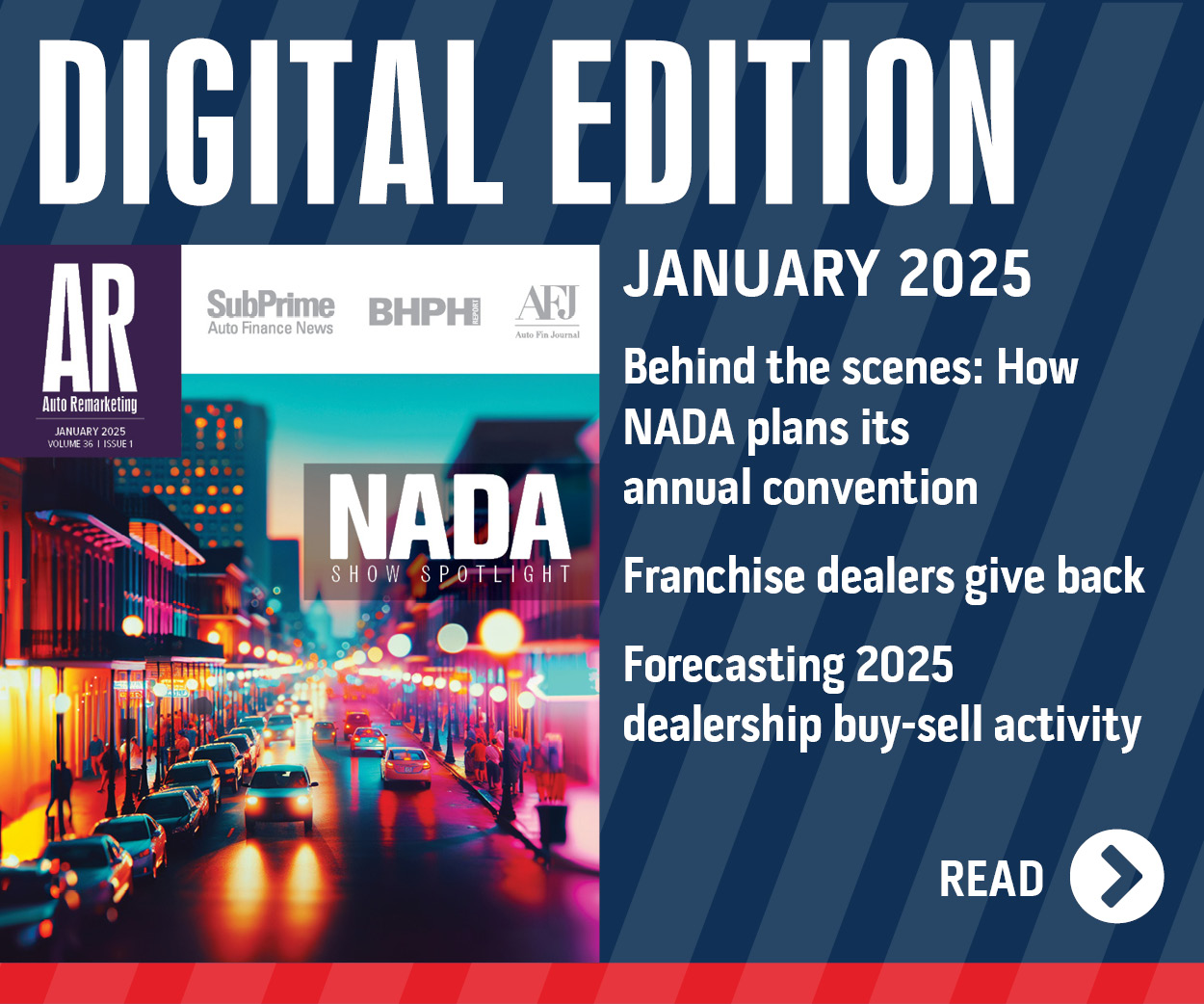Fleming: Improve the F&I Processes for Women and Increase CPO Sales

The used-car market is thriving, and smart dealers are focusing their communication and sales efforts on women who make up 53 percent of all used-car sales and influence a much higher percentage of all purchases.
Women today are exercising more control over their personal finances and the contractual dealings they enter into. It’s no secret they are much savvier when it comes to car financing than they were ten or more years ago
The Used-Car Market Today
The used-car business has had three of its best years ever, and sales so far this year are skyrocketing. A recent study completed by CNW shows the number of used-car shoppers in March topping 8.1 million, a significant increase from 7.8 million during the same month last year. Franchised dealers sold 1.08 million used cars, over 17 percent more than a year ago. Independent stores increased used car sales by 7.1 percent over last year (960,804 cars sold). Even private-party sales rose 8.75 percent.
Aside from the rebounding economy, two key factors triggered these record-breaking numbers: Trade-ins and cars sold from the ever-increasing inventory of vehicles returned to the dealership at the end of a 24- or 36-month lease. These numbers are expected to increase as 2010 and 2009 leases expire this year. Industry experts are now predicting a softening in the used-car market and lower used-car prices as these cars begin to flow in.
CNW President Art Spinella contends the second factor is the large amount of buyers between the ages 25 and 35, and noted these millennials — men and women who have grown up in the technology age — are a very powerful target audience that are driving car purchases today.
Dealer Financing & Women Buyers
Of the used-car sales made at dealerships, over 57 percent of them came into the dealership as lease returns from 24-36-month leases. Dealers now have an ever-increasing inventory of vehicles with low mileage and exemplary service records returned to them that are ready to make their debut at the other end of the lot as premium CPOs.
CPO programs are popular among women because they eliminate many of the risks of buying a used car, avoid the depreciation of a new car and allow consumers to drive away in models they could not otherwise afford.
Women buyers often run into the situation with their banks and financial institutions charging higher interest rates on used cars compared to new ones. And, customer’s interest rate can be higher depending on their income, employment status and credit score.
Dealerships are a little more flexible with their financing requirements and, often times, particularly with CPO vehicles this year; manufacturers/dealers are offering low financing rates for women car buyers who qualify. The savings can be significant. By taking advantage of these CPO rates, women can save thousands of dollars over what they would pay over the life of the car loan.
However, in a recent study by J.D. Power and Associates, results show that more consumers are obtaining financing from non-dealer sources such as banks, credit unions and online lenders. Currently, it’s important with all the electronic and traditional marketing messages, that the flexibility and real money savings your dealership’s financing offers is communicated well, often and clearly.
Financing Options Today: More Competition, More Value
But the auto loan financing market is becoming increasingly crowded. As banks, credit unions and independent lenders — online and otherwise — become more active in automotive financing, manufacturer-sponsored financing programs offered by dealers will face pressure to become even more competitive — and creative. The Internet is fast becoming the most popular platform for car shopping.
Online dealer support venues like BankHunter, Dealertrack Technologies, Route One and Complete Auto Loans are reaching out to the lending market with increasing frequency — all in an effort to get the best loan at the best rate with the highest level of efficiency.
While these four companies are similar in design, processing and reputation, BankHunter has a superior service delivery to the dealer. Their patented software sorting method reduces the lender decision time by 90 minutes, doubles the number of credit approvals and increases dealership sales by 20 percent. According to Gina Parr, company president, “it costs dealers to not use us — lost sales, turning away qualified customers, wasted man hours. Dealers make $18–20 return on every dollar spent with BankHunter.”
Building a strong online reputation is the latest undertaking by Complete Auto Loans, the highly awarded bad credit auto loans company. With a new Web-based marketing strategy offering auto loans with a 100 percent acceptance rate to all applicants, particularly those with a poor credit history, the company now has an auto financing network of lenders in place working to give people with bad credit — many of whom are women — a second chance.
Previous studies of auto loans have found that mark-ups on loans — largely invisible to the buyer — can cost borrowers hundreds, even thousands, of dollars. Those hardest hit are women and minority borrowers, who often pay twice or three times as much as someone who is white and male.
In a move that could have a dramatic impact on the cost of auto financing through dealerships, the Consumer Financial Protection Bureau has issued new rules that would make lenders responsible for discriminatory pricing on auto loans — even when they didn't strike the deal with the consumer.
This is going to place more commitment on the part of dealerships not to do engage in these types of behaviors — at all. If they do, says Kathleen Day, spokeswoman with the Center for Responsible Lending, “the banks providing them money are going to pull their credit”.
Dealership Pitfalls
Pitfall #1. Telling women they can have several “extras” that will add only pennies a day to their monthly payments and, thereby, create higher commissions for you.
Action. Women are more pragmatic and economical in their car choices. Safety is their top concern. When it comes to CPOs, sell them on the extended service warranty, but don’t push for things like fabric protection. They can buy a can of Scotchgard . Heck, give them a can of Scotchgard and get a friend for life. Women will trust you if you offer a real-value, rather than her experiencing “pressure.”
Pitfall #2. Say something “bogus” to get a buyer to purchase her car from you on your terms.
Action. Women car buyers do their homework. They will walk into showrooms primed with all kinds of information about models, pricing, financing, options, and may even know your inventory position. And, on average she visits three dealerships prior to buying. Words and actions that ensure trust are key to have her engage with you, versus walking out the door and never coming back.
Pitfall #3. Thinking women car buyers aren’t aware of the importance of the F&I experience. Assuming they view all the paperwork as something to be completed as quickly as possible so they can drive off the lot in their “new” car.
Action. Women may in fact view all the paperwork as something to be completed as quickly as possible, but it’s because time is their most precious commodity. Be mindful and respectful of it. Make sure you provide her with a checklist of all that is needed when doing the “actual buying” of the car. Tell her how long the F & I process will take, so she has a clear idea.
Pitfall #4. Most women won’t know what their credit rating is nor will they have researched current interest rates.
Action. Women car buyers will in fact have a copy of their credit report, and will know what kind of interest rate they expect to receive from the dealer. They will also know if you’ve offered them a competitive rate. They’ll have quotes from local dealers and online car buying websites.
Pitfall #5. Intertwining the different elements of the deal — vehicle price, financing and trade-in value. Tell the woman you’ll give her an extra-low price on the vehicle, but this interest rate is the “best” you can offer.
Action. Be prepared for some women to ask you to “unbundle the deal” and treat her car buying as three separate negotiations. These women are savvy car buyers. They will want to stay focused on the APR and won’t answer the question, “How much can you afford to spend per month?”
What Dealers Can Do To Improve the F&I Experience
Hire customer-friendly F&I Managers F&I managers should always be professional, friendly, connect quickly with a woman car buyer and follow a process that includes the review of all the legal documents required to complete the purchase and the presentation of additional products for purchase. The F&I Manager is key in the overall success of the dealership and should always work to have the hand-off from sales to the paperwork of buying a car more seamless and less interruptive.
Serve the customer the same way every time. Create a vision, develop a mission statement, provide in-depth training for F&I managers and use the latest technology and software available to help them do their jobs and provide exceptional customer service. In fact, have that mission statement be visible in their office so customers can view.
Surprise & Delight. Do things right but focus on doing the right thing. In a conversation recently with Sandy Smith, business manager at Kelly Mitsubishi in Emmaus, Pa., I learned about a unique customer centric ideology that she and the Kelly Family of dealerships uphold.
“Our customers deserve nothing less than exceptional service and that means we are ready, willing and able to do things that other dealerships won't. We are risk free, and always work diligently with our many lenders to keep their payment affordable as possible,” said Smith.
But this dealership goes above and beyond.
“We have many times where the customer takes their new Kelly car home, but if I get the bank to give them a better deal the next day, I will bring the customer back and complete the documents all over again so they get what they deserve. Most dealers are done after a customer signs the papers. At Kelly, a ‘good’ buying experience just isn't ‘good’ enough,” Smith continued.
Expedite the loan approval process, and reduce the time spent with the F&I Manager. Time is extremely valuable to all customers. Transform the car-buying experience and imagine a customer driving off in their new car in a couple of hours and not the 4.5-plus hours it now takes. Develop checklists, and encourage F&I managers to follow them to reduce the time spent on paperwork. Be the dealership that can actually say and advertise: “Buy a Car in 90 Minutes!”
Go the extra mile and read the fine print when it counts The biggest benefit of buying a CPO car is the warranty that goes beyond the original one that came with the new car. Demonstrate the value of what the buyer is getting in exchange for the higher price. Go over every detail of the warranty agreement at the time of purchase, and make sure she has proof that the car is under warranty. Do the same with the inspection report and the purchase agreement. Encourage all and any questions.
Editor’s Note: Anne Fleming is president and car-buying advocate at Women-Drivers.com, and a guest contributor for Auto Remarketing. She is also among the 13 industry leaders we recognized the April 15-30 print and digital issues as the 2013 Women in Remarketing. Congratulations to Fleming and all our honorees!
Continue the conversation with Auto Remarketing on both LinkedIn and Twitter.

 View The Latest Edition
View The Latest Edition

